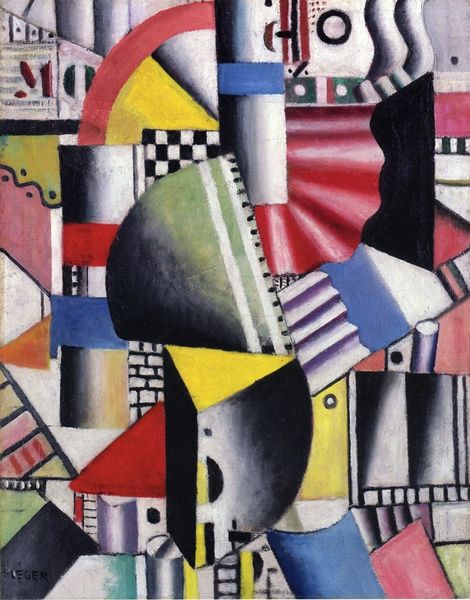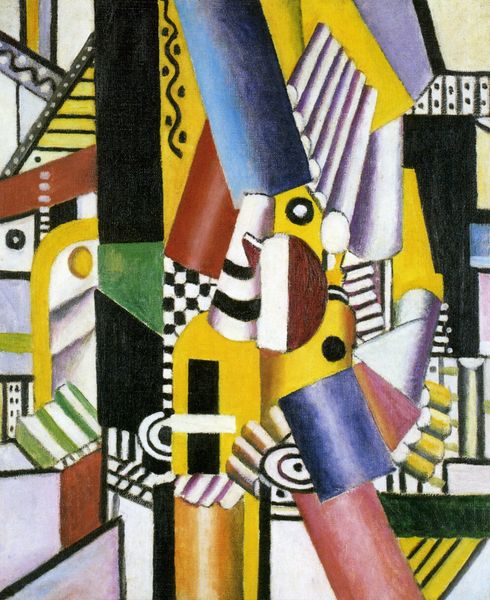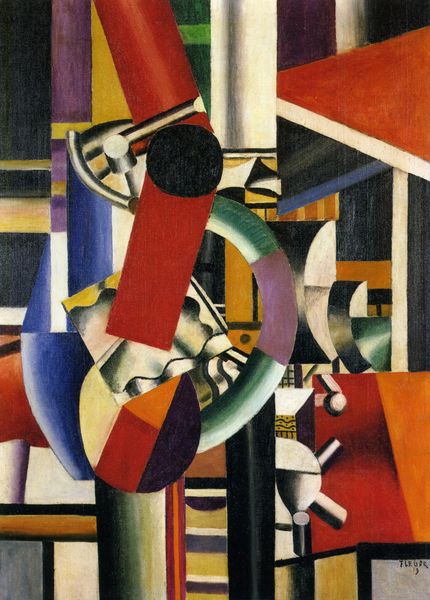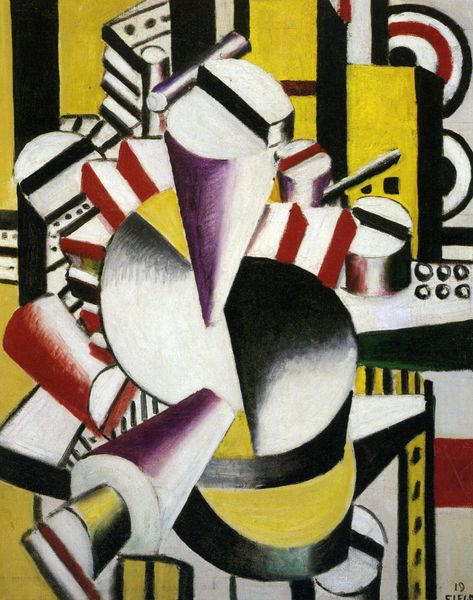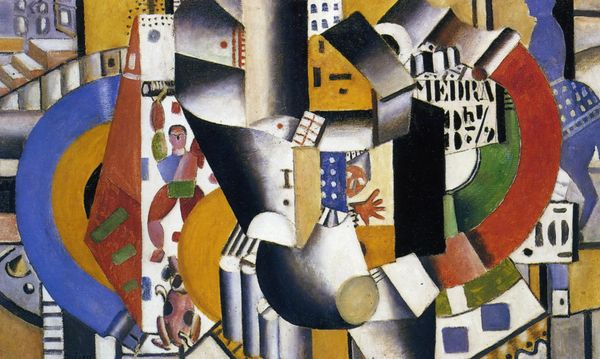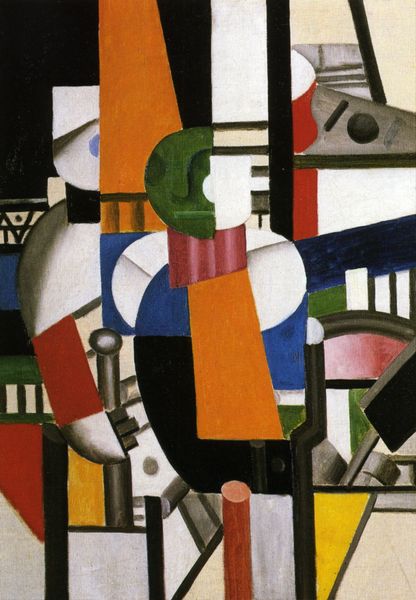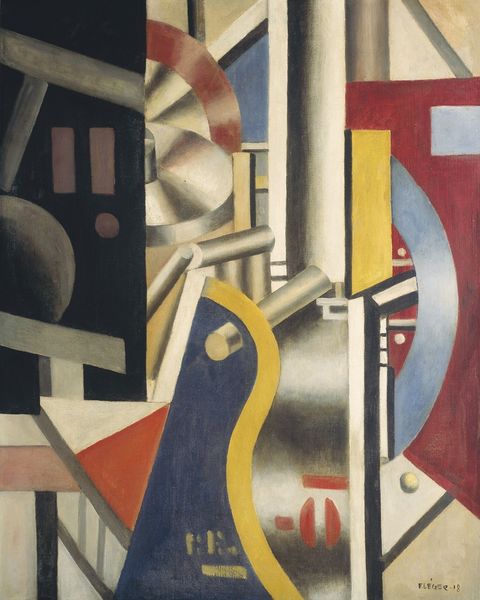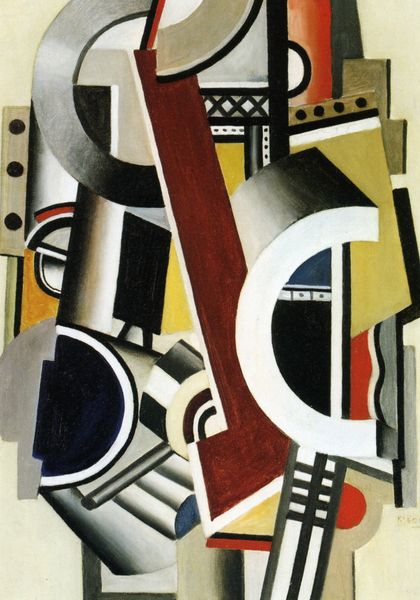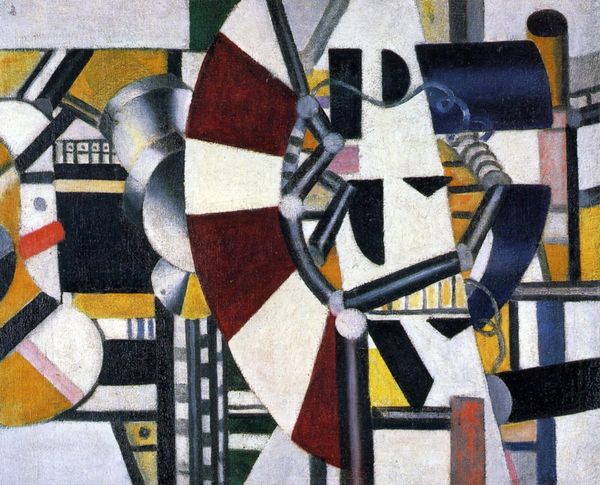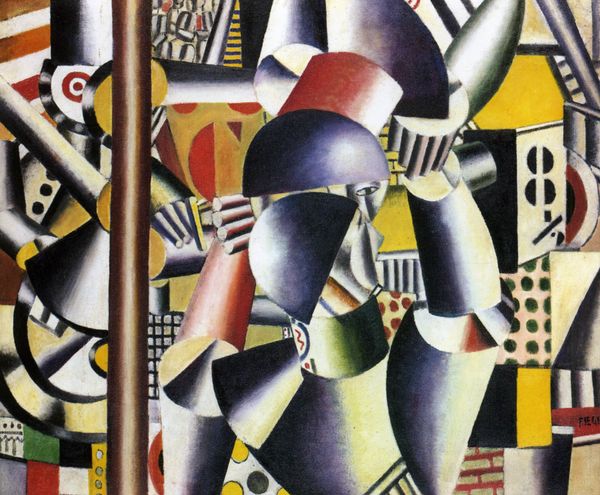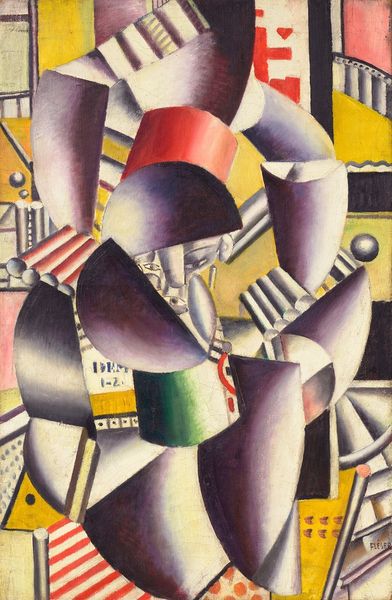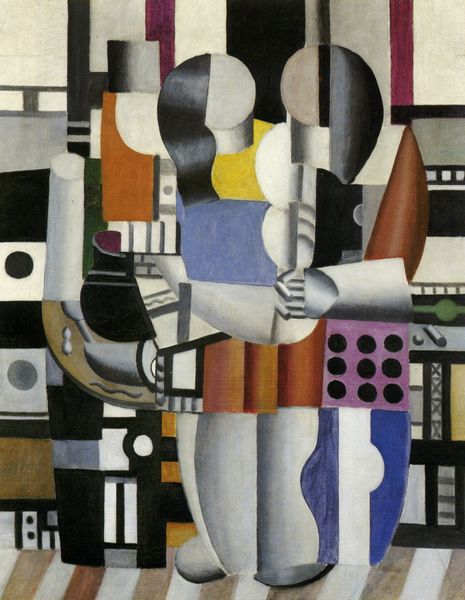
painting, oil-paint
#
cubism
#
abstract painting
#
painting
#
oil-paint
#
form
#
geometric
#
abstraction
#
modernism
Copyright: Public domain US
Curator: Welcome. Today we're looking at Fernand Léger's "Contrast of Forms", an oil painting from 1918. It’s quite the vibrant assembly of geometric shapes. Editor: It feels like a jazzy machine trying to assemble itself. Like a robot dance frozen in time. Curator: That's a great way to put it. Léger was very interested in machinery and the industrial age, you know? His aim was to portray a modern world through abstract forms and stark contrasts. You can really see how he’s playing with the push and pull of color. The yellows just sing. Editor: Absolutely. The use of bold colours and contrasting geometric forms creates a sense of dynamic tension. Note how the planes intersect and overlap without resolving into a coherent perspectival space. What does it mean to create an illusion of depth in painting, especially an illusion based on an anachronistic perspectival schema, when industrial society creates such flat and superficial social relations? Léger seems to be hinting at a transition. Curator: That's insightful. And if we consider that Léger served in World War I, and it heavily impacted him... These stark shapes, this almost violent juxtaposition, could it mirror the fractured experience of war, of machines replacing humanity on the battlefield? Editor: That's certainly plausible, yes. Although I'm wary of making biographical fallacies about his state of mind at the time, and how that supposedly plays out in his art, your observation points toward a certain degree of irony toward the society then, even though Léger and his art seemed celebratory of machine modernity on the surface. It begs a deeper question: what is the nature of celebrating art's machine nature while hinting at war's mechanical destruction and creation of superficiality? Perhaps it is pointing to art as an idealization of a potential that exists when technology liberates instead of oppresses... Curator: It really does encourage you to think. The relationships between the shapes create a rhythm, an energy... It’s hard to just glance at it; your eye has to dance around the canvas. It’s strangely life-affirming, you know? It embraces change. Editor: Yes, it's as if Léger foresaw a world that’s constantly being constructed and deconstructed. Which is not really surprising, in a time of colonialism... Well, this has certainly added a new layer to my understanding. Curator: Mine too! There’s always more to discover, isn’t there?
Comments
No comments
Be the first to comment and join the conversation on the ultimate creative platform.
